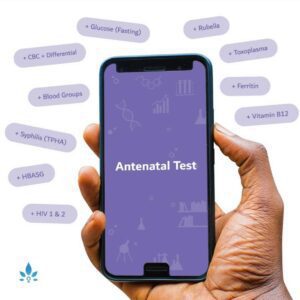I Have Gestational Diabetes: What are the Risks to my Unborn Baby?


The greatest risk for a baby that is exposed to Gestational Diabetes Mellitus affect the newborn (GDM) in utero is large birth weight, which is known medically as macrosomia.
Macrosomia
This refers to babies who weigh over 4 KG or are above the 90th centile. Quite apart from the difficulties for the mother in delivering such a large baby, macrosomia can have serious health consequences for the neonate, including an increased risk of birth injury and, fortunately only in exceptional cases, early neonatal death.
Other risks
There is a slightly increased risk of foetal malformations. However, this is thought to be primarily due to undiagnosed type 2 diabetes, rather than GDM itself. GDM-induced malformations occur when the condition has been diagnosed early on in pregnancy. Most women are not diagnosed until after 24 weeks and thus, the risk of their babies developing malformations is negligible.
GDM does increase the likelihood of interventional approaches such as induced labour and C-section, each of which has its own complications. Furthermore, if these intervention techniques are implemented before 37 weeks, the birth will be classed as premature and the baby may require further monitoring and additional care. Whilst studies are yet to find a direct link between maternal GDM and infant respiratory distress, babies that are more than 4 KG at birth have an increased risk of respiratory distress. A major problem in managing this situation is that premature birth and C-section delivery are additional risk factors for respiratory distress. Therefore, even if you take steps to avoid macrosomia and its associated issues, your baby might still need additional medical support at birth.
Later health problems
In addition to the risk of complications during pregnancy and delivery, having untreated GDM can predispose your child to health problems later in life. These include impaired glucose tolerance, high blood pressure and obesity, which in combination increase the chances of them developing type 2 diabetes themselves. GDM is not the only risk factor for these conditions; genetics and lifestyle exposure almost certainly play an important role too. Breastfeeding is one way of counteracting some of these negative effects, as it has been shown to improve glucose tolerance and lower the risk of childhood obesity.
It has also been suggested that GDM in the mother can increase the likelihood of the child having attention deficiencies and delayed language as they reach middle childhood, around the age of 7. The offspring of less educated women are more affected, suggesting a concurrent environmental or genetic element.
Recent studies have revealed that babies born to mothers with GDM have different bacteria present in their gut. This is known as an altered microbiome profile. It is thought that the presence of specific bacteria in the gut of a neonate helps with the maturation of their immune system. Thus, a disruption in this homeostasis can have long term effects on the child’s ability to overcome infections and put them at increased risk of metabolic disease later in life.
Most of these adverse effects can be significantly reduced by successful management of the mother’s GDM; further highlighting the importance of identifying and treating the condition as soon as possible.
Nabta is reshaping women’s healthcare. We support women with their personal health journeys, from everyday wellbeing to the uniquely female experiences of fertility, pregnancy, and menopause.
Get in touch if you have any questions about this article or any aspect of women’s health. We’re here for you.
Sources:
- Bener, A, et al. “Prevalence of Gestational Diabetes and Associated Maternal and Neonatal Complications in a Fast-Developing Community: Global Comparisons.” International Journal of Women’s Health, vol. 3, 2011, pp. 367–373., doi:10.2147/IJWH.S26094.
- Dionne, G, et al. “Gestational Diabetes Hinders Language Development in Offspring.” Pediatrics, vol. 122, no. 5, Nov. 2008, pp. e1073–1079., doi:10.1542/peds.2007-3028.
- Groof, Z, et al. “Prevalence, Risk Factors, and Fetomaternal Outcomes of Gestational Diabetes Mellitus in Kuwait: A Cross-Sectional Study.” Journal of Diabetes Research, vol. 2019, no. 9136250, 3 Mar. 2019, doi:10.1155/2019/9136250.
- Mitanchez, D. “Foetal and Neonatal Complications in Gestational Diabetes: Perinatal Mortality, Congenital Malformations, Macrosomia, Shoulder Dystocia, Birth Injuries, Neonatal Complications.” Diabetes & Metabolism, vol. 36, no. 6, ser. 2, Dec. 2010, pp. 617–627. 2, doi:10.1016/j.diabet.2010.11.013.
- Mitanchez, D, et al. “Infants Born to Mothers with Gestational Diabetes Mellitus: Mild Neonatal Effects, a Long-Term Threat to Global Health.” The Journal of Pediatrics, vol. 164, no. 3, Mar. 2014, pp. 445–450., doi:10.1016/j.jpeds.2013.10.076.
- Su, M, et al. “Diversified Gut Microbiota in Newborns of Mothers with Gestational Diabetes Mellitus.” PloS One, vol. 13, no. 10, 17 Oct. 2018, p. e0205695., doi:10.1371/journal.pone.0205695.












































